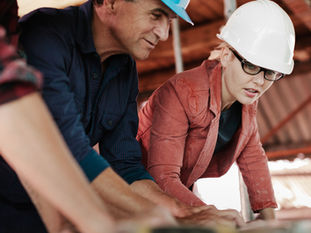
How Green Construction is Transforming South Florida
Dec 9, 2024
2 min read
5
27
0
Green construction has evolved from a passing trend into a global necessity. In South Florida, a region celebrated for its breathtaking landscapes, vulnerability to climate change, and rapid urban growth, the adoption of sustainable building practices is reshaping the way communities interact with their environment.
What is Green Construction?
Green construction refers to the design, building, and operation of structures that minimize environmental impact and optimize natural resource use. This includes energy efficiency, water conservation, sustainable materials, and practices that improve the quality of life for occupants while protecting surrounding ecosystems.
Why South Florida Needs Green Construction
South Florida faces unique challenges that make green construction essential:
Climate Risks: The region is particularly vulnerable to rising sea levels, hurricanes, and extreme heat waves.
Population Pressure: Rapid population growth places a significant demand on natural resources.
Ecological Sensitivity: Critical ecosystems like the Everglades and coastal beaches require protection from unchecked urban development.
These circumstances have driven developers and local authorities to embrace sustainability-focused measures.
Examples of Green Construction in South Florida
The transformation is evident in numerous landmark projects:
1. LEED-Certified Buildings
Many skyscrapers and residential developments in cities like Miami and Fort Lauderdale have earned LEED (Leadership in Energy and Environmental Design) certifications by incorporating:
Solar panels.
Rainwater harvesting systems.
Recycled construction materials.
2. Green Infrastructure
Urban design is evolving with features such as green roofs, vertical gardens, and sustainable drainage systems that help mitigate flooding and reduce urban heat.
3. Planned Sustainable Communities
Projects like Westlake and Arden prioritize energy-efficient homes, extensive green spaces, and access to public transportation, promoting more sustainable lifestyles.
Benefits of Green Construction
Green construction not only benefits the environment but also offers tangible advantages for communities and the local economy:
Energy Savings: Efficient buildings significantly lower electricity and water costs.
Increased Property Value: Sustainable properties are increasingly sought after by eco-conscious buyers.
Job Creation: The green construction industry generates opportunities in emerging sectors like renewable energy and sustainable design.
Health and Well-being: Green buildings improve air quality and reduce heat stress, directly benefiting residents.
The Role of Government and Community
The growth of green construction in South Florida would not be possible without supportive public policies and community involvement. Initiatives such as sustainable building codes and tax incentives have encouraged the adoption of green practices. Public education campaigns also raise awareness of the importance of this transformation.
Challenges and Future Opportunities
While green construction is gaining momentum, challenges remain:
High Initial Costs: Although benefits are long-term, developers often face upfront financial barriers.
Technological Adaptation: Incorporating new technologies requires training and time.
However, these challenges present opportunities for innovation, positioning South Florida as a leader in sustainable urban development.
Conclusion
Green construction is redefining the future of South Florida, creating a region that is
more resilient, healthier, and harmonized with its natural surroundings. With the collaborative efforts of developers, governments, and residents, this transformation can not only enhance today’s cities but also safeguard the environmental legacy for future generations.






